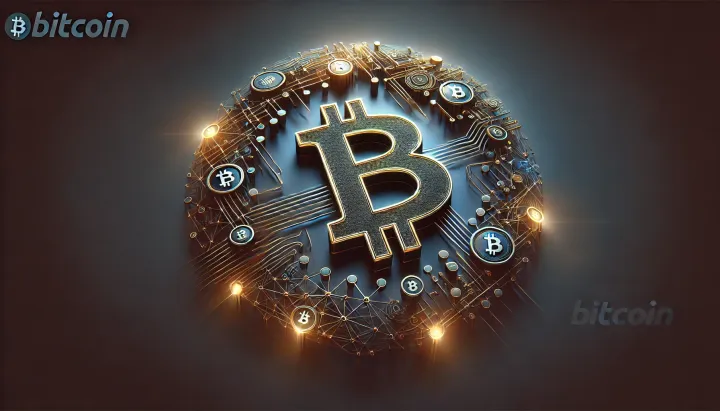Hashing and Mining in Bitcoin: Securing the Future
The September 20, 2024 episode of The Bitcoin Layer centers on Nik Bhatia’s efforts to explain the intricacies of Bitcoin to economist Michael Howell. They discuss key aspects of Bitcoin’s underlying cryptography and mining mechanisms.

Briefing Notes
My 'briefing notes' summarize the content of podcast episodes; they do not reflect my own views. If you have comments about this briefing note, please leave a comment below (requires signing up for a free blog subscription). Note that some of the podcast episodes I summarize may be sponsored: don't trust, verify, if the information you are looking for is to be used for decision-making.
Summary
The September 20, 2024 episode of The Bitcoin Layer, the second of the series on teaching Bitcoin, features Nik Bhatia and Michael Howell exploring the technical foundations of Bitcoin’s security and its mining process. By delving into Bitcoin’s cryptographic infrastructure, including SHA-256 hashing and the public-private key system, the hosts explain how Bitcoin ensures ownership and prevents unauthorized spending. The conversation extends to Bitcoin’s energy-intensive mining process and its scalability challenges, addressing the network’s long-term resilience and potential for future innovation.
Take-Home Messages
- Bitcoin’s security is rooted in cryptography: Bitcoin’s public-private key cryptography ensures secure ownership and transactions, while SHA-256 provides long-term protection against unauthorized access.
- Energy consumption is critical for Bitcoin mining: While mining is energy-intensive, innovative approaches, particularly the integration of renewable energy, can address sustainability concerns.
- Fixed supply reinforces scarcity: With a hard cap of 21 million coins, Bitcoin’s limited supply plays a major role in its value retention, offering a strong store of value in the digital economy.
- Second-layer solutions enhance scalability: The Lightning Network and other second-layer innovations offer promising avenues to address Bitcoin’s scalability challenges without centralizing power.
- Bitcoin is adaptable: The protocol’s inherent flexibility allows for future upgrades, ensuring it can stay secure and relevant as technological advances, such as quantum computing, emerge.
Overview
The second episode in the series has host Nik Bhatia taking economist Michael Howell through the fundamentals of Bitcoin, with a focus on explaining Bitcoin’s foundational cryptographic security measures and the mining process. Nik introduces the basics of Bitcoin’s public-private key cryptography, where each user holds a private key to secure their assets and a public key for transaction purposes. He explains that the SHA-256 hashing function plays a key role in making Bitcoin transactions irreversible, thus securing the network from unauthorized spending.
The discussion transitions to Bitcoin mining, where miners compete to solve cryptographic puzzles and earn new Bitcoin. Mining is explained as an energy-intensive but essential process, ensuring both the validation of transactions and the maintenance of the blockchain’s integrity. Bhatia addresses common concerns about the environmental impact of Bitcoin mining, discussing how energy usage is tied directly to the cryptographic work miners perform.
Michael Howell’s insights on Gresham’s Law lead to a discussion of Bitcoin as a form of “good money” that may be hoarded while less secure assets continue to circulate. The episode concludes by covering Bitcoin’s fixed supply of 21 million coins and its long-term value proposition. Bitcoin’s unique combination of scarcity, cryptographic security, and decentralized network effects makes it a compelling store of value, adaptable to future technological and market changes.
Stakeholder Perspectives
- Miners: Concerned with the rising costs of mining operations, miners are exploring the use of renewable energy and more efficient hardware to sustain profitability.
- Investors: Focus on Bitcoin’s fixed supply and its role as a store of value. They are concerned with potential technological risks such as quantum computing, which could undermine Bitcoin’s cryptographic security.
- Regulators: Face the challenge of addressing Bitcoin’s environmental impact while promoting innovation. Striking a balance between regulation and growth remains a central issue.
- Developers: Aiming to enhance Bitcoin’s scalability and efficiency, developers are working on second-layer solutions like the Lightning Network and continually upgrading Bitcoin’s software to ensure security.
Implications
Bitcoin’s reliance on cryptographic security through SHA-256 has proven to be a robust and effective way of ensuring ownership and transaction integrity. However, as advancements in quantum computing edge closer, Bitcoin’s cryptographic protocols may need to evolve to remain secure. This will require ongoing vigilance from both the technical community and investors concerned about the long-term security of their assets.
The environmental impact of Bitcoin’s mining process has drawn significant attention from regulators and environmental groups. However, this concern presents a substantial opportunity for integrating renewable energy sources into mining operations, potentially positioning Bitcoin as a leader in sustainable technology. Bitcoin mining’s evolution could also pave the way for broader industrial applications of energy-efficient technologies.
Scalability continues to be a key challenge, with Bitcoin’s block size limiting transaction throughput. The development of second-layer solutions, such as the Lightning Network, offers promising avenues to increase transaction capacity without sacrificing the decentralized nature of the network. Nevertheless, achieving widespread adoption of these solutions will require concerted efforts from the developer community and the Bitcoin user base.
Future Outlook
Bitcoin’s future will depend largely on its ability to address key challenges related to energy usage, scalability, and security. As mining becomes more energy-intensive, integrating renewable energy will be crucial to maintaining the network’s sustainability and credibility. Innovations in this area could set Bitcoin apart as a leader in green technology.
From a security perspective, advancements in quantum computing could eventually threaten Bitcoin’s cryptographic infrastructure. The Bitcoin community must anticipate and prepare for such developments by researching and implementing more advanced cryptographic techniques. In the short term, Bitcoin remains secure, but ongoing efforts will be required to ensure its longevity.
In terms of scalability, second-layer solutions like the Lightning Network show potential to increase transaction throughput, enabling Bitcoin to handle more transactions while preserving its decentralized nature. Future upgrades and innovations will focus on enhancing these solutions while maintaining network security.
Information Gaps
- Quantum Computing Threats: Research is urgently needed to explore how Bitcoin’s SHA-256 encryption could withstand future advancements in quantum computing. Ensuring Bitcoin’s security against quantum threats is critical for maintaining user trust.
- Renewable Energy Integration: More studies are needed to determine the best methods for integrating renewable energy into Bitcoin mining operations. This will be key to balancing sustainability with the growing energy demands of the network.
- Scalability Through Second Layers: While second-layer solutions like the Lightning Network offer potential, research into their long-term effectiveness and limitations is needed. Understanding the trade-offs between scalability and decentralization is crucial.
- Mining Centralization: As mining becomes more capital-intensive, research is needed to understand the impacts of centralization on Bitcoin’s decentralized ethos. This includes exploring new policies or innovations to distribute mining power more equitably.
- Incentive Structures Post-Halving: As Bitcoin’s block rewards halve over time, it will be essential to research alternative incentive models to ensure the long-term security of the network. Understanding how miners will remain incentivized in the future is crucial.
Broader Implications
Environmental and Economic Shifts in Energy Markets
The energy-intensive nature of Bitcoin mining, addressed in the podcast, ties directly to broader global energy market trends. As renewable energy becomes more accessible and cost-effective, Bitcoin mining could serve as a catalyst for innovation in energy storage and distribution technologies. Bitcoin mining operations, particularly in underutilized regions, could help stabilize energy grids by consuming excess power during off-peak times, thereby transforming Bitcoin into a key player in both financial and energy systems.
Bitcoin as a Financial Sovereignty Tool
The podcast’s focus on Bitcoin’s decentralized structure and ownership security points to a broader implication: Bitcoin’s role in promoting individual and national financial sovereignty. In regions experiencing economic instability or authoritarian regimes, Bitcoin offers a means of transacting and storing value outside the control of central authorities. This ability to bypass traditional financial institutions could drive global adoption, especially in developing countries, offering new pathways for financial inclusion and independence.
Institutional Integration and Market Dynamics
The scalability issues raised in the podcast hint at the broader implication of Bitcoin’s integration into institutional financial systems. As more institutions consider Bitcoin for portfolio diversification and transaction settlement, the demand for seamless scalability will grow. This could accelerate the adoption of second-layer solutions or even drive the development of new financial products based on Bitcoin’s infrastructure, creating shifts in both market dynamics and regulatory frameworks.



Comments ()